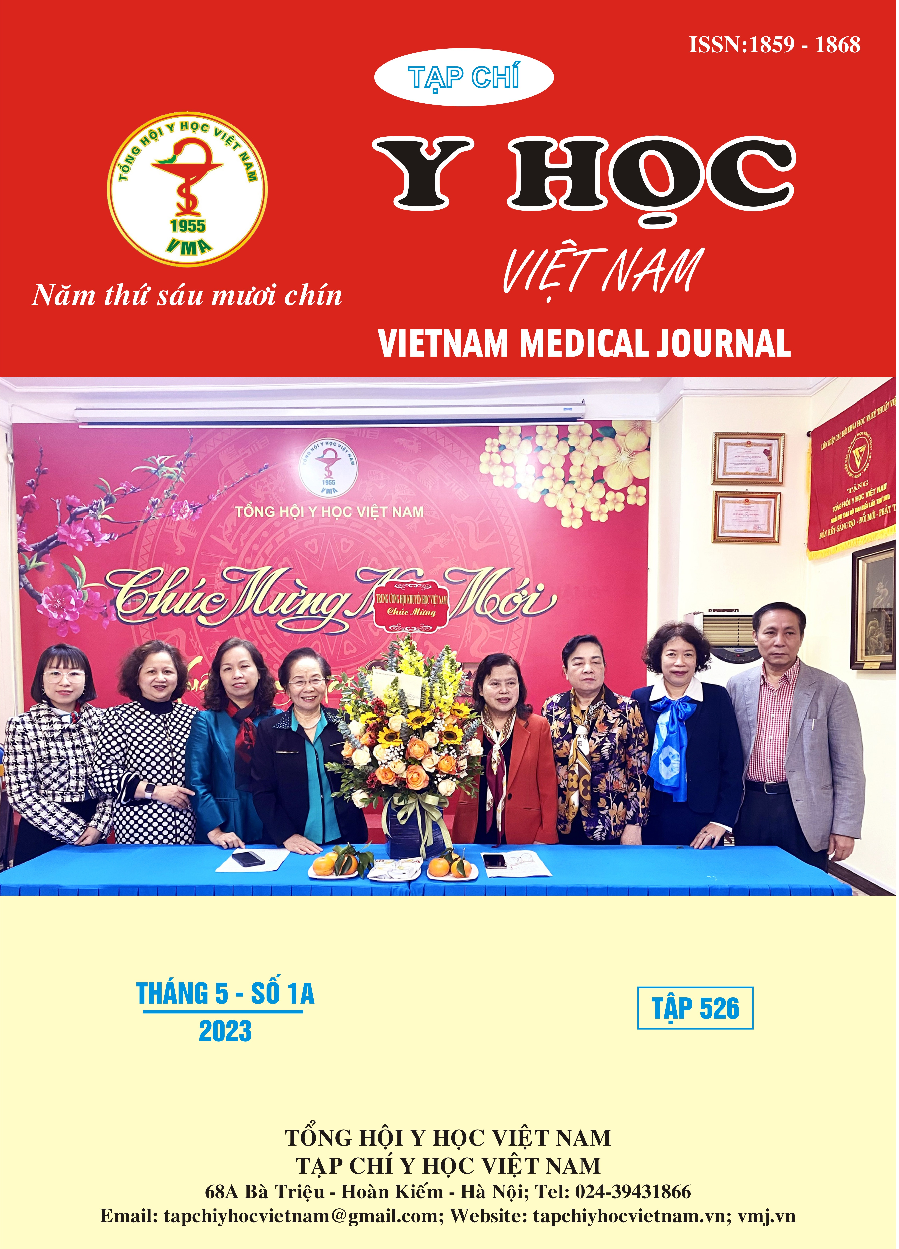EPIDEMIOLOGICAL CHARACTERISTICS, RISK FACTORS OF MENINGOCOCCAL AND POPULAR SEROGROUPS
Main Article Content
Abstract
Objectives: To describe the epidemiological characteristics, risk factors of Meningococcal in some key areas. Subjects and methods: a cross-sectional descriptive study, sampling and testing by ELISA method to detect anti- N. meningitidis antibodies on 21,630 serum samples collected from 3 regions of the Northwest, the Central Highlands and the Southwest. Results: The percentage of people carrying anti-meningococcal antibodies in the Northwest region was 7.94%, higher than in other regions, this difference was statistically significant, with p < 0.05. The proportion of people with anti-meningococcal antibodies in the Central Highlands was: 4.19%, higher than the infection rate in the Southwest region of 1.90%. This difference is statistically significant, with p<0.05. The rate of people infected with meningococcal disease in all 3 regions was 4.61%. The lowest rate of people infected with meningococcal disease in the 36-55 age group was 4.53%. Highest in age group from 56-65: 5.88%. The difference was statistically significant, with p<0.05. People working in agriculture, forestry, farming, farming and soldiers have a higher rate of meningococcal infection than those working in self-employed and other occupations, the difference is statistically significant with p < 0.05. The rate of pathogenic serogroups (including B and C) in 3 regions was 92.31%. The lowest is the Southwest (57.14%), the highest is the Central Highlands (100%). This difference is statistically significant (p(2;3) < 0.01). The structure of serogroup B infection in all 3 regions accounts for a high rate (85.90%). Serogroup C was found in the Northwest (11.90%) and the Southwest region (6.41%). Conclusion: The overall prevalence of anti- N. meningitidis antibody carriers was 4.61%. There are differences in the rate of infected people across regions, ages, occupations and regions. Serogroup B and C accounted for 92.31%.
Article Details
Keywords
epidemiology, meningococcal, key areas, serogroups
References
2. Vogel, U., Molecular epidemiology of meningococci: application of DNA sequence typing. Int J Med Microbiol, 2010. 300(7): p. 415-20.
3. Tzeng, Y.L., et al., Translocation and surface expression of lipidated serogroup B capsular Polysaccharide in Neisseria meningitidis. Infect Immun, 2005. 73(3): p. 1491-505.
4. Tzeng, Y.L., et al., Translocation and surface expression of lipidated serogroup B capsular Polysaccharide in Neisseria meningitidis. Infect Immun, 2005. 73(3): p. 1491-505.
5. Achtman, M., Epidemic spread and antigenic variability of Neisseria meningitidis. Trends Microbiol, 1995. 3(5): p. 186-92.
6. WHO (2018), Mapping of National Tropical-Disease Centers / Institutions in Southeast Asian, Final report.
7. Cartwright K (1995), “Meningococcal carriage and disease. Meningococcal Disease” (CartwrightK, ed), pp. 115–146.
8. Goldacre M J, Trevor Lambert, Julie Evans, Gill Turner. “Preregistrantion house officers’ views on whether their experience at medical school prepared them well for their jobs: national questionnaise survey”. BMJ Volume 326, pp. 1011-1012.
9. Cedric Mims (1996), “The Pathogenesis of the Acute Exanthemst”. Review in Medical Virology. Vol 6, pp. 1-8.
10. Borrow, R., H. Claus, U. Chaudhry, M. Guiver, E. B. Kaczmarski, M. Frosch, and A. J. Fox (1998), “siaD PCR ELISA for confirmation and identification of serogroup Y and W135 meningococcal infections”, FEMS Microbiology Letters 159, pp. 209-214.


